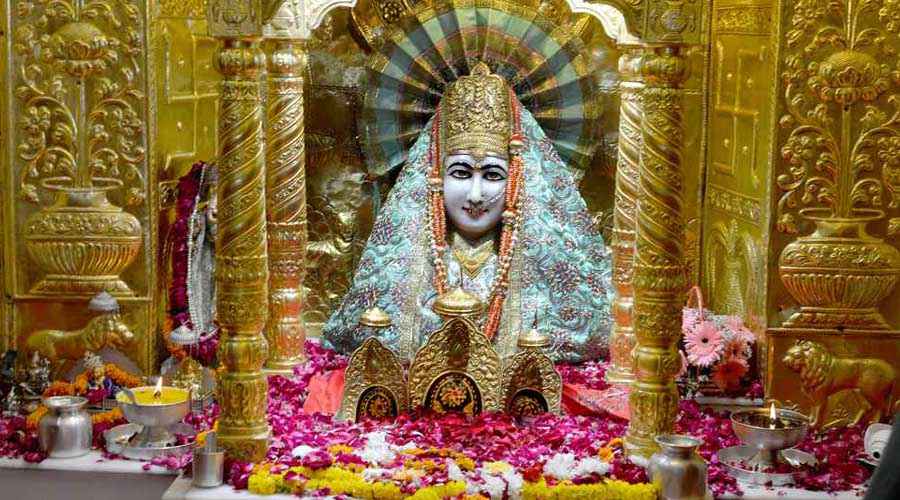India is adorned with countless temples that reflect its rich cultural and spiritual heritage. Among them, the Swarnagiri Temple stands out as a shining beacon of devotion and artistry. Literally translating to “Golden Hill Temple,” Swarnagiri is not just a religious site but also an embodiment of architectural grandeur, serenity, and divine inspiration. Perched in peaceful natural surroundings, this sacred temple has become a significant destination for both pilgrims and travelers seeking to embrace spirituality alongside cultural exploration.
History and Significance
The name Swarnagiri originates from two Sanskrit words — Swarna (gold) and Giri (hill). Ancient legends suggest that the temple was envisioned as a divine seat where devotees could connect with celestial energies while being anchored to the earth. Dedicated primarily to Lord Venkateswara, an incarnation of Vishnu, the Swarnagiri Temple is considered to be inspired by the famed Tirumala temple in Andhra Pradesh.
Believed to have been constructed with the blessings of revered saints, the temple carries a deep spiritual resonance. It was designed to make the darshan (sacred viewing of the deity) accessible to devotees who might not be able to travel to Tirumala. Over the years, the temple has emerged as an iconic locale where tradition and modern religious practices blend seamlessly.
Architectural Grandeur
One of the most striking features of the Swarnagiri Temple is its architectural brilliance. Crafted in traditional South Indian style, the temple towers (gopurams) are intricately carved with mythological motifs. The sanctum sanctorum houses the beautifully adorned idol of Lord Venkateswara, decorated with elaborate jewelry and floral garlands, giving devotees a deeply divine experience.
A unique feature of the temple is its golden embellishments. True to its name, Swarnagiri features decorative golden panels, domes, and temples entrances wrapped in gilded artistry. The shimmering surfaces reflect sunlight, creating a mesmerizing view visible even from a distance. The temple complex is also adorned with beautifully landscaped gardens, meditation spaces, and sculptures that narrate mythological tales.
The temple’s surroundings on elevated land add to its spiritual aura, giving visitors the feeling of ascending to a sacred plane removed from worldly chaos. At night, when the temple lights glimmer across the golden facades, the setting acquires an almost ethereal charm.
A Center for Devotion and Rituals
Swarnagiri Temple is not merely a monument to art; it is alive with devotion, rituals, and spiritual practice. Daily pujas, abhishekams (ritual bathing of the deity), and devotional chants fill the temple with a transformative energy. Thousands of devotees gather here during Brahmotsavam and Vaikunta Ekadashi — annual festivals dedicated to Lord Vishnu. These celebrations are marked by grand processions, cultural programs, and community feasts.
The temple also promotes discipline in worship. The seva (offering) system allows devotees to participate in rituals and receive blessings through symbolic acts like archana and aarti. In addition, Swarnagiri encourages collective worship with melodious music and Vedic recitations echoing throughout the complex, offering a deeply immersive spiritual experience.
A Peaceful Spiritual Retreat
Beyond being a religious center, Swarnagiri Temple serves as a retreat for those seeking inner calm. Its serene surroundings make it an ideal destination for meditation and self-reflection. Visitors from across India and abroad come not only for blessings but also for a journey toward mindfulness. The temple’s location amid natural hills enhances this sense of tranquility, where silence and spirituality seamlessly merge.
The temple management has also created spaces such as meditation halls and serene walkways, encouraging spiritual seekers to dwell in prayer or silent contemplation. Many visitors testify to experiencing a profound sense of peace after spending time in meditation here.
Accessibility and Pilgrimage Experience
Swarnagiri Temple has become accessible to pilgrims from various regions thanks to modern infrastructure. Well-maintained roads, parking spaces, and support facilities make the visitation experience smooth and welcoming. Volunteers and temple staff guide visitors while maintaining decorum in sacred zones.
Pilgrims often combine their temple visit with nearby cultural and natural explorations, making it both a spiritual and recreational outing. The temple’s hilltop location also provides sweeping panoramic views of the surrounding area, offering devotees a refreshing connection with nature.
Cultural and Social Contributions
Swarnagiri Temple is not limited to religious functions alone. It serves as a hub of cultural preservation and community development. Traditional dance and music performances, workshops on Vedic chanting, and bhajan gatherings frequently take place in the temple premises. These activities sustain India’s living traditions and inspire younger generations to remain rooted in cultural values.
Moreover, the temple engages in philanthropic initiatives. Annadanam (the sacred offering of free meals) is organized regularly for devotees and the underprivileged, reflecting the philosophy of service as devotion. Educational drives, health camps, and spiritual awareness programs further highlight the temple’s commitment to social welfare.
An Attraction for Travelers
Though primarily a pilgrimage site, the beauty and magnificence of Swarnagiri Temple make it an attractive tourist destination. For photographers, the temple’s golden embellishments and panoramic hill backdrop provide breathtaking frames. For cultural explorers, the intricate carvings and mythological artwork offer deep insights into Indian spirituality and artistry.
International travelers often include Swarnagiri Temple in their itineraries to experience authentic Indian spirituality. Its ability to balance spiritual devotion with aesthetic grandeur makes it memorable even for those unfamiliar with Hindu traditions.
Conclusion
Swarnagiri Temple is more than a place of worship — it is a confluence of art, spirituality, and cultural heritage. With its golden brilliance, divine rituals, and peaceful atmosphere, it stands as a sanctuary of hope and devotion. For pilgrims, it provides a sacred gateway to divinity; for travelers, it unfolds as a cultural treasure; for seekers, it offers a retreat into peace.
Amidst the chaos of modern life, Swarnagiri Temple serves as a sacred reminder that the journey toward divinity is often as rewarding as the destination itself. A visit to this golden hill temple is not just a religious act, but a holistic experience of spirituality, culture, and timeless beauty.


